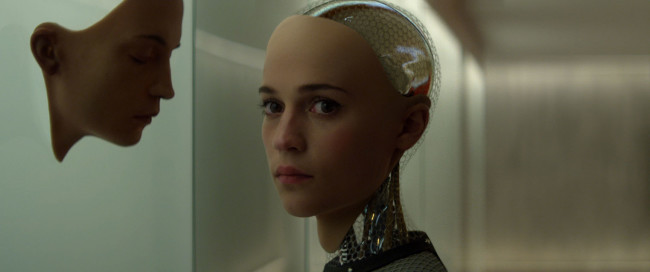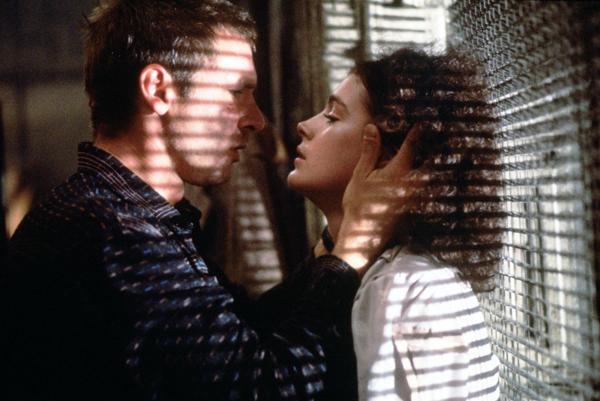
“Ex Machina” is a science fiction film which tells a story of a young programmer, Caleb who is invited by his employer, Nathan, to administer the Turing test to a female robot, Ava who has Artificial Intelligence.
The film investigates the subject of creation of a woman which has a long history in both literature and cinematography.
The plot of “Ex Machina” is an intelligent interpretation of the short story “The Sandman”, written 200 years ago by E.T.A. Hoffman about a mad scientist who creates a woman-automaton and the naive young guy who falls in love with her. The film follows the fabula of Sandman with three main characters and even the scientists name Nathan is an homage to the character Nathaniel written by Hoffman. The main difference is that the naive Caleb in “Ex Machina” knows from the beginning that Ava is an android, while Nathaniel takes Olympia for a real one.
A love story between robot and man cannot have a happy ending. Nathaniel went mad, Nathan was killed and Caleb was securely locked in a remote location.
The film investigates the problems not only of robots and people but also the issue of objectification of a woman. It shows that the fake relationship between men and women becoming more and more acceptable by men for whom appearance replaces real human feelings. It reflects a man’s perception of a woman, their ideal of a woman – first and foremost attractive.The most primitive example of it is a sex doll. This aspect was also touched in the film “Lars and the Real Girl” in which the eponymous character develops a romantic relationship with an anatomically correct sex doll named Bianca.
The doll of Lars is just his imaginary friend. When Lars took her to the church, I was actually not surprised people there pretended that she was alive. It does not matter for him that she cannot feel nor respond. He is so alienated that even this plastic item makes him happy.

Blade Runner
Perhaps the most important film which explores the issues of artificial intelligence is the classic science fiction picture “Blade Runner” by Ridley Scott.
“Blade Runner” depicts a dystopian Los Angeles in which Rick Deckard, a police operative of the Blade Runner unit is given a mission of terminating four replicants – androids who are indistinguishable from humans, who have returned to Earth where they have been declared illegal.
That’s another thing when we speak about Rachel from “Blade Runner”. She is created in an artificial way, but she looks like a human, she is alive, she has human emotions. In “Blade Runner” issues arise from the differences between man and machine. In this universe the differences between human and Replicant have grown so thin that a fictional mechanical device, the test, is required to distinguish them.
In “Blade Runner”, the main character is called Deckard, pronounced like Descartes, the name of an philosopher famous for the statement “I think, therefore I am”. With light sarcasm, one of the film’s androids quotes Descartes’ famous sentence in an attempt to establish that he exists on an equal footing with humans. In this way, one of the film’s main theme is what is required in order to possess identity? The answer of the film is that this is more than consciousness, it is the human being’s place in a history, memories, etc. that build up identity.
Although it is based upon an old story “Ex Machina” is an interesting independent film which makes a contribution into the investigation of important problems of humanism.
